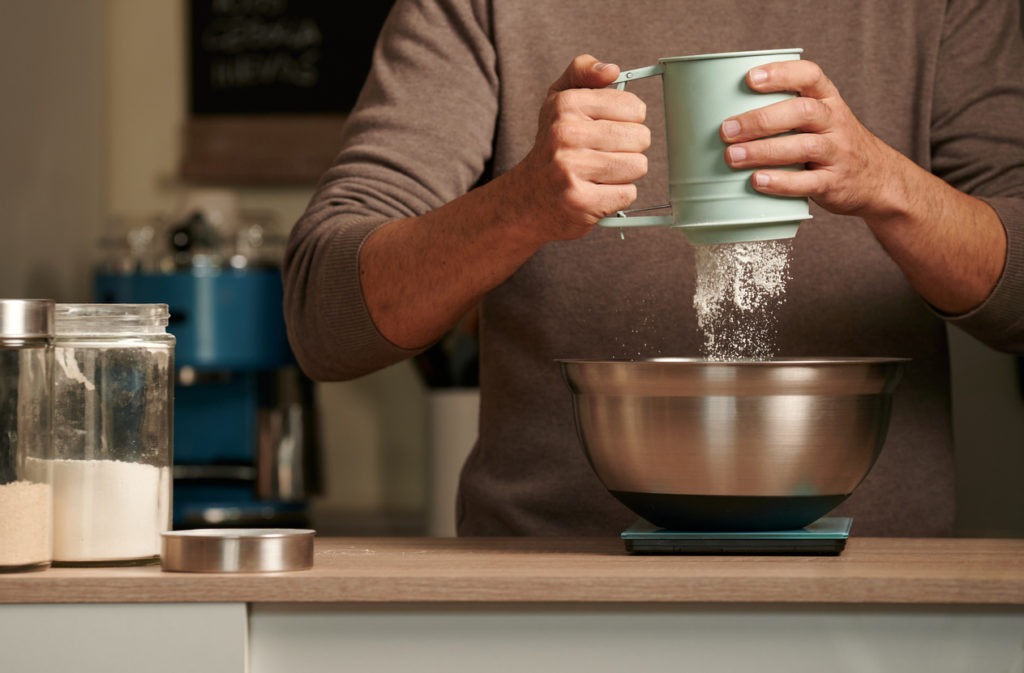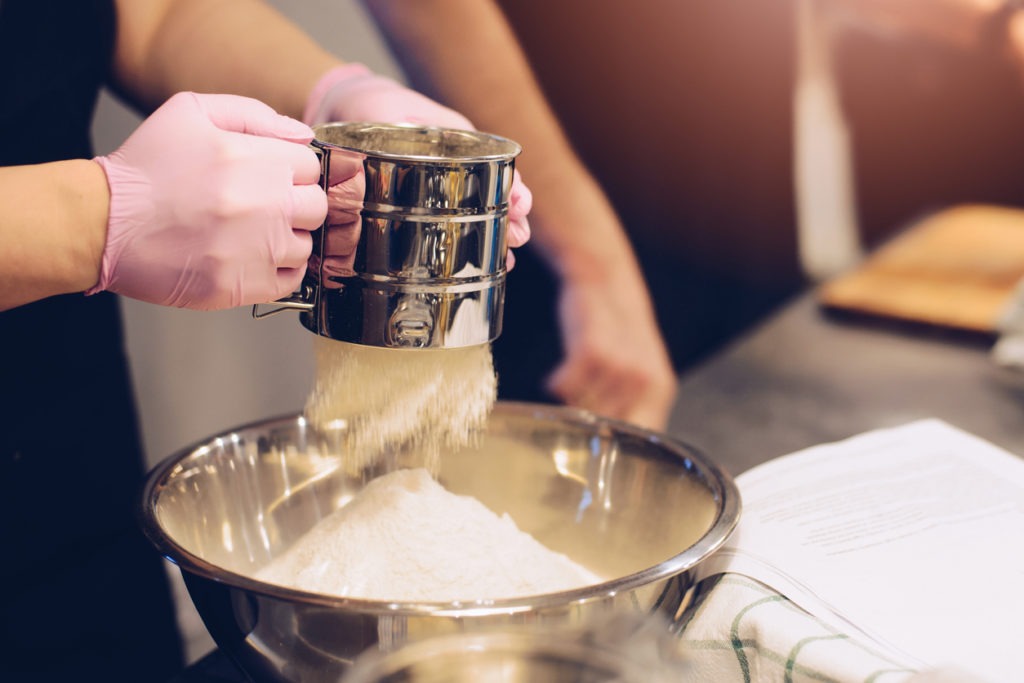Although flour sifters aren’t the most visually appealing baking tools, they are among the most practical because they can be used to slightly enhance almost every baking recipe available. They are multi-purpose tools that can give your baked goods a unique flair; they don’t just have one use. We’ll examine everything you should know about flour sifters in this article.
What are Flour Sifters?
A flour sifter is a hand-operated tool that enables the baker to finely grind kitchen ingredients like flour or spices.
A flour sifter appears to be a sizable metal mug from the outside, usually with a crank on the side and no bottom. You can see a layer of thin metal mesh inside the mug that prevents anything other than the tiniest particles of flour or spices from passing through and sprinkling out of the bottom of the sifter when the grinding machine is in use.
Flour sifters were created in 1819, and since then, neither their appearance nor their functionality has changed much. No one has felt the need to significantly innovate because it is a straightforward design that functions well. Mechanical sifters exist, but they merely do away with the need for careful hand cranking to sort the contents.
What are Flour Sifters Used For?
Some clever applications for flour sifters include:
1. Breaking Down Flour
A flour sifter is most frequently used to grind flour before using it in a recipe. By doing this, the flour will be completely chunk-free and even the large flour grains will be ground into smaller ones, giving the baked goods a smoother texture. Many bakers overlook this step or choose to skip it because they believe it won’t make a difference, but this is incorrect.
For instance, there is a significant difference between a cookie made with unsifted flour and the same recipe made with sifted flour. The texture of the cookies made with sifted flour is significantly less grainy.
2. Sprinkling Powdered Spices
Spices can be sprinkled on food in thin layers using a flour sifter. The flour sifter is one of my favorite kitchen tools, even though most bakers completely overlook this use. It’s just such a fun and simple way to give a recipe a completely new flavor profile.
Perhaps you’ve just finished making these Applesauce Brownies for your holiday party and are looking for a way to give them a little extra kick. Simply place a small amount of cinnamon in the flour sifter, sift it, and then sprinkle the resulting cinnamon powder on your brownies. As a result, the flavor coating is more delicate and subtle than if cinnamon were to be sprinkled directly onto the brownies.
Selecting Your Flour Sifter
1. Capacity
What volume of flour does the sifter hold? You need a large-capacity sifter for the job if you intend to bake in large quantities. You can always sift in multiple batches, but anything beyond two becomes a little tiresome.
2. Mesh Size
On the box of the majority of flour sifters, the mesh size is specified. The mesh is finer the higher the number. The flour will be finer after sifting if the mesh is finer, but sifting will take much longer.
A mesh size of 20, 30, or 40 is fairly common and will work in 99% of circumstances. Super-fine flour can be produced using a mesh size of 50. Anything higher is, in my opinion, excessive. Most flour sifters have two meshes; once the flour has been partially broken down, you run it through the finer mesh first.
3. Durable Materials
Flour sifters are unreliable because even a slight bending or lifting of the grinding mechanism away from the mesh can cause it to stop working. As a result, make sure to use high-quality building materials.
4. Design
The four types of flour sifters are battery-operated, squeeze-handled, handheld, and crank-style. The conventional choice is a crank-style sifter, which requires only that you turn the knob. This model’s only drawback is that it requires two hands, whereas squeeze-handled models only require one. The motion of squeezing, though, can be painful for some people’s joints. A handheld wand is a great option for quick jobs, and a sifter with a button you can press will be incredibly simple to use.
5. Ease of Cleaning
Some flour sifters can be put in the dishwasher, which is a great feature because washing them by hand can be difficult. Make sure the one you’re considering can be disassembled for simpler cleaning if it’s handwash only.
How to Sift Flour?
A fine-mesh strainer, a sieve, or a specialized flour sifter can all be used to sift flour. If you don’t have access to one of these specialized cooking implements, aerate the flour by placing it in a mixing bowl and whisking it in the air with a wire whisk.
To sift using a tool, slowly pour the flour into the sifter while holding the fine-mesh sieve or sifter over a bowl. Depending on the tool being used, tap the sides or turn the hand crank until all of the flour has been sifted through.
Should you Wash your Flour Sifter?
Yes. Dishwasher-safe flour sifters include those made of stainless steel. However, some are not. Some of those that aren’t can be easily disassembled and cleaned in this manner, but some can’t. In the latter scenario, soaking the entire sifter for 20 minutes in a solution of water, dish soap, and baking soda before wiping it clean with a sponge is the simplest way to clean it. Regardless of the kind of flour sifter you own, you should always clean and dry it after each use.
Conclusion
A recipe that uses flour as an ingredient, which is virtually all baking projects, can be made significantly better by using a flour sifter. They also have a high level of durability and will continue to serve you for a very long time. You will be able to learn more about flour sifters with the assistance of this guide.




